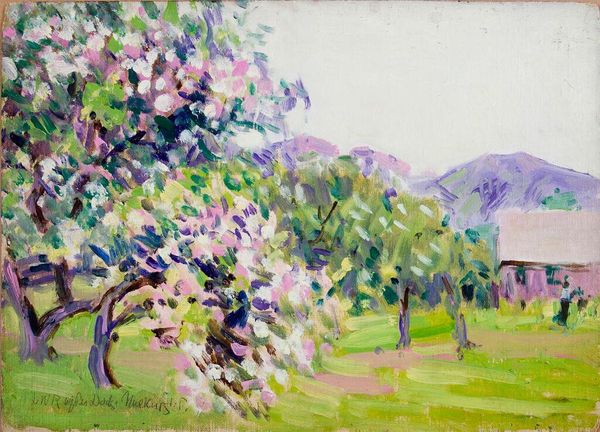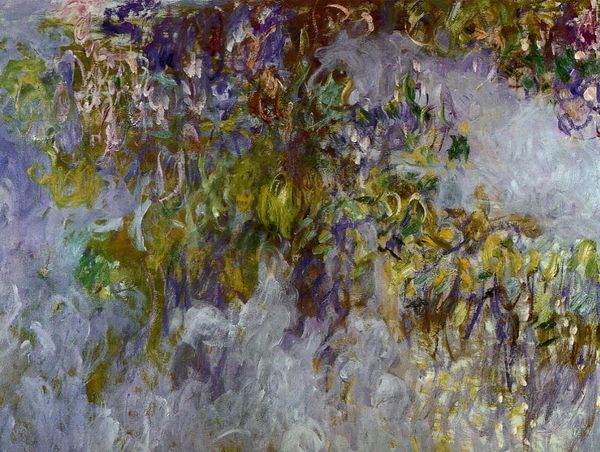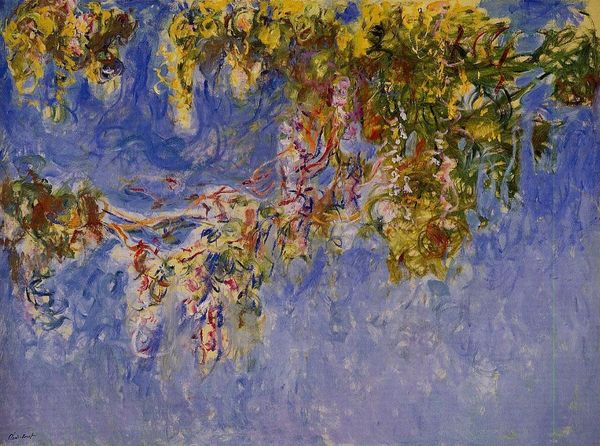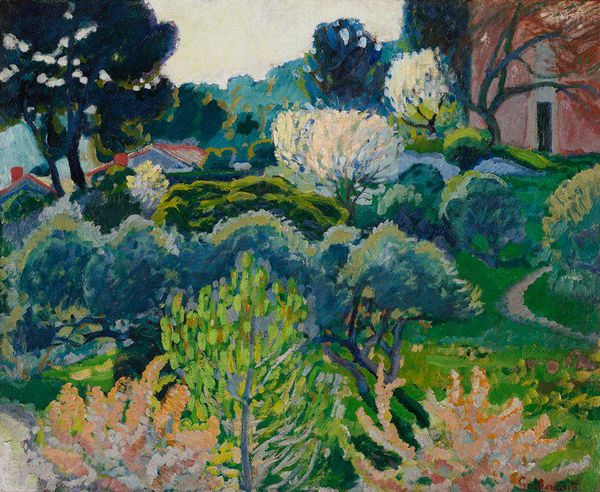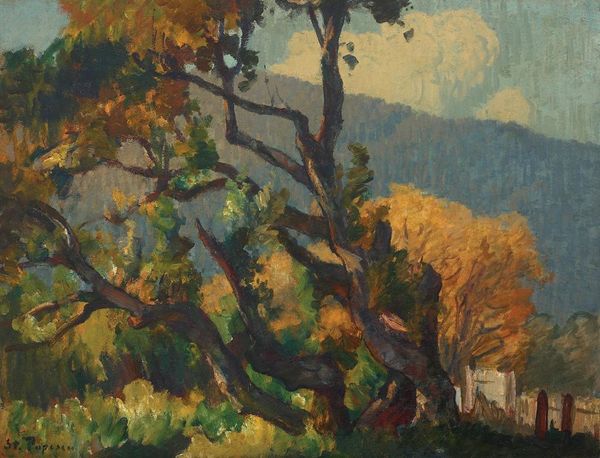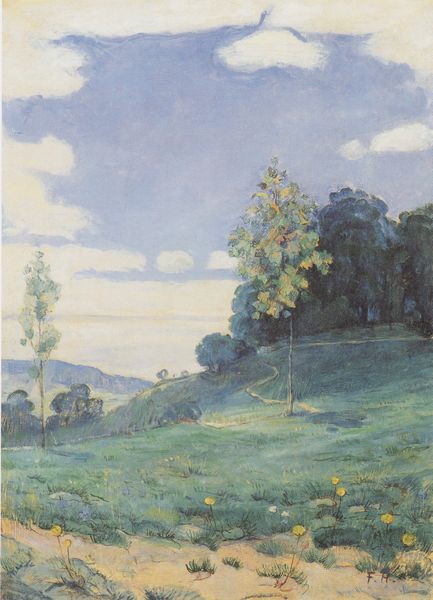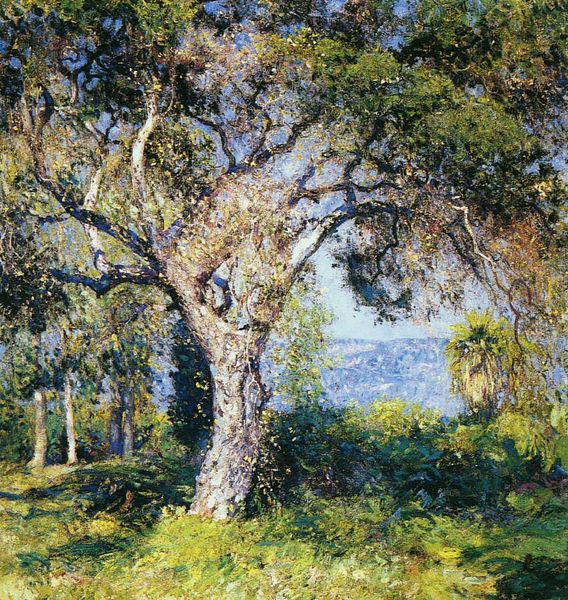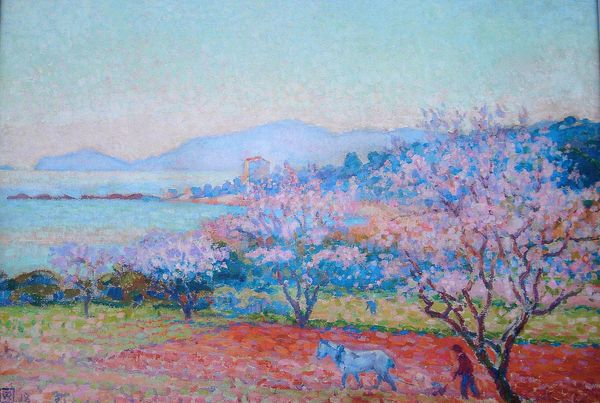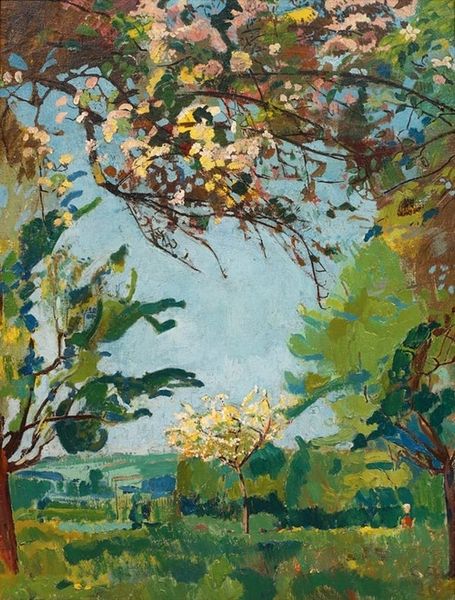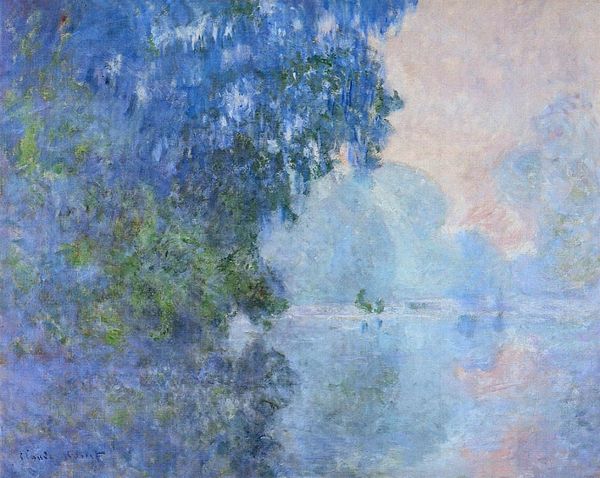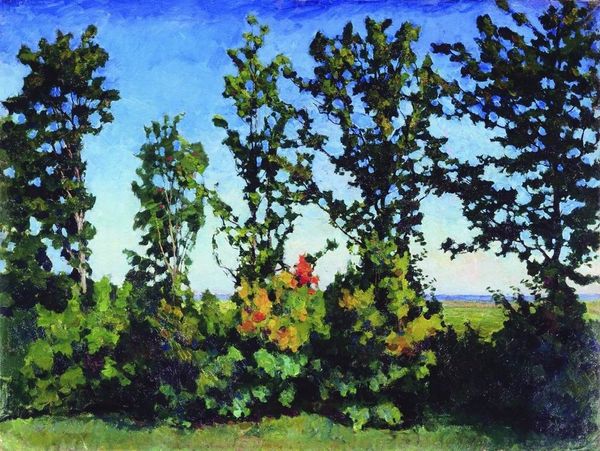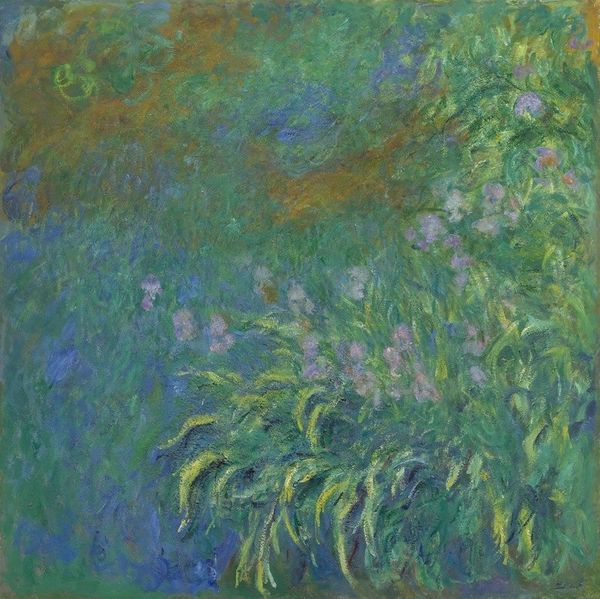
Copyright: Public domain
Editor: Boris Kustodiev’s “Blooming Wisteria,” painted in 1912, is such a dreamy landscape. The wisteria cascades down, framing this almost fairytale-like scene. How do you interpret the imagery Kustodiev presents here? Curator: I see a profound connection between nature and memory. The wisteria, almost like a curtain, veils a landscape reminiscent of a half-remembered dream. Do you notice how the blooms, with their ephemeral beauty, dominate the scene? They act as a symbol, not just of spring, but perhaps of fleeting moments of joy and nostalgia. Editor: That's interesting. I was mostly focused on the overall composition and color. I hadn't considered the emotional weight of the wisteria itself. Curator: Consider wisteria's traditional association with long life and immortality in some cultures. The way Kustodiev paints it – almost overwhelming the landscape – suggests a desire to capture or perhaps hold onto something beyond our grasp. What emotions do those colors evoke in you? Editor: The blues and greens do feel calming, almost melancholic. Like looking at a beautiful memory that’s just out of reach. Curator: Precisely! The hazy background contributes to this dreamlike quality. Even the mountain seems to recede, as if fading into the past. Kustodiev isn't just painting a scene; he's capturing a feeling, a sense of yearning for something lost or unattainable. Editor: I definitely see it now. It's less about the physical landscape and more about the emotion it represents. Thanks, that gives me a whole new perspective. Curator: My pleasure! Sometimes the deepest meanings lie within the symbols themselves, waiting to be decoded. It enriches the work when one thinks of enduring human conditions and our persistent desire to impose order.
Comments
No comments
Be the first to comment and join the conversation on the ultimate creative platform.
